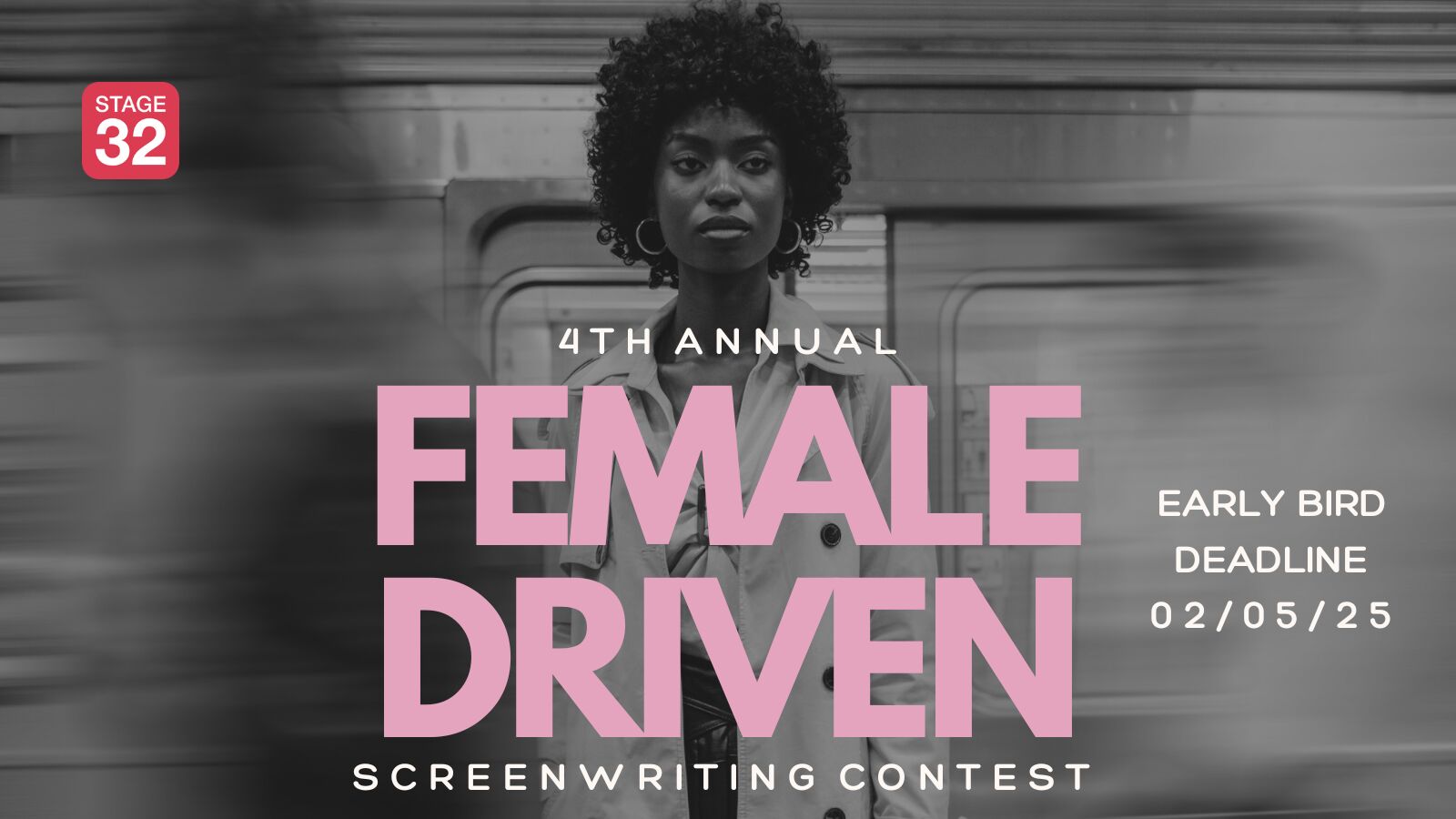Something I wrote awhile ago:
Writers struggle constantly with the issue of how to tell their movies. The savvier ones know that they must leave out the jargon and the tech-speak. They know that they must tell it briefly. They are told to never direct the actors by including parenthetical instructions in the dialogue unless it is not obvious in the context already. They struggle with the amorphous notion of subtext and how to get it across. They want to write visually. They want to include every one of those zinger-lines of dialogue they came up with. They want their movies to exhibit a voice, a vision. But they’re told not to worry, just tell their stories, and if they’re any good it’ll be enough. Then their scripts come back with, “Thanks for letting us see this. Good luck with it.” Everyone knows the established pros can do whatever they want. It’s like bringing a knife to a gunfight.In David S. Cohen’s, SCREEN PLAYS, p. 184 - 5, Writer-director, Don Roos (DIABOLIQUE [Remake], THE OPPOSITE OF SEX, BOUNCE) describes his method of getting his vision into the script:
Unfortunately, screenplays have to sell off a read (for spec sales), and the readers and buyers are often the people who want everything spelled out in the dialogue. As Roos explained, few of them really grasp the power of film. ‘There are very few film enthusiasts in Hollywood, really, at those levels. Very few people who have favorite films, who are moved by films or understand remotely what film does. It’s difficult talking to idiots, it really is.’
How, then, to get the subtext across to those ‘idiots,’ when they’re responsible for deciding whether to buy your script?
‘You put it in the action lines,’ Roos responds. ‘Here’s a scene:
Two characters, Linda and Steve.
Linda comes in, she says hi.
‘Steve says hi.
‘Linda says, ‘I’m going upstairs to bed.’
‘Steve says, ‘I’ll follow you.’
That’s the actual [dialogue] that will be in the scene. [But let’s say] I mean it to be a love scene. I have to put all of that in the subtext in the action lines:
Linda enters the room. She sees Steve. It’s the moment she’s been waiting for, but she can’t trust herself to speak.
LINDA
Hi.
You do it that way, so that people understand what you’re trying to do, but you don’t commit the sin of putting it into your actor’s mouth. Because I guarantee you, by the time we get to that Linda/Steve scene, we know how Linda feels about Steve. We know how she feels when she comes home and he’s sitting there. It’s everything she hoped for. So we don’t want her to say, ‘Hi, Steve, it’s everything I’ve hoped for to see you here.’ We don’t need her to say that. We want her to cover that. It will be much, much more powerful.
Writing this way, Roos said, can be ‘very liberating. And it’s very simple. It’s a novelistic approach. In the action lines, you can actually be the director, conveying the subtext of the characters. (Other than for the action, that’s) what they’re for—subtext.
Roos learned this approach long ago, even before he became a director. ‘I would get notes very early on: ‘Your main character is unlikable.’ And literally, I would put in the action line, ‘Sam enters. Although abrasive, there’s something strangely likable about him.’ And then Sam’s dialogue would be, ‘You fat bastard, go f--k yourself.’ But it doesn’t matter. Because I’ve put that ‘strangely likable,’ they know that even though he says something awful, he’s a likable character. It’s obvious, but it works.’
But isn’t that cheating? No, Roos said. ‘Because what those action lines are supplying is the actor’s face, the direction, the way that somebody says something. It is cheating to put it into dialogue, because then you’re pretending it’s a radio play, instead of a movie.’
So Roos commits one of the screenwriting priesthood’s Cardinal Sins: he includes more than merely the action and the dialogue, he includes the direction, the performance, and whatever else cannot be carried by the dialogue and action alone.
They tell you, "Show, don't tell". But if you can't indicate the subtext in a script with no director signed yet, no cast selected, and no track record as a writer, you aren't merely hamstrung, you're defeated.
Roos is not unique. In SCREEN PLAYS, p. 261, screenwriter, John Logan described how he inserted nuance into his script for Martin Scorsese’s film of THE AVIATOR:
[Logan suggested] the tone of a scene with a simple line of scene description, without having to spell out details he knew Scorsese could conjure on his own. (For example, when [Howard] Hughes visits Katherine Hepburn’s family in New England, Logan writes, ‘Dinner with the Hepburns is a thrilling experience, if you like juggling axes blindfolded.’
I recently watched a film that, if not for IT’S A WONDERFUL LIFE, might have become THE Frank Capra film they show for the holidays: MEET JOHN DOE. At first it hardly seems like a holiday choice, but by the end, it’s squarely in the Christmas film genre. It also has a lot of relevance to today’s economic plight.
It tells the story of a newspaper reporter, played with a lot of moxie, by Barbara Stanwyck, who is about to lose her job to downsizing. So she invents a news story about a guy she calls John Doe, who has a lot of common sense to say about the way things are, and announces that, because of it all, he will jump off a building on Christmas Eve at midnight. The paper picks it up before it knows it’s not true. Then, after she tells her editor, she keeps her job by telling him how the paper can survive the crisis: hire a bum to become the fictional Doe. So, they bring in a bunch of bums and pick one, a down-and-out ball-player who washed out due to injury, played by Gary Cooper. He doesn’t know the full extent of the deception, but accepts the job because he and his “buddy,” played by Walter Brennan, are hungry. From there the deception snowballs when Stanwyck pulls speech material for the Doe appearances from her late father’s diary—outspoken rants on society. The public goes nuts for the stuff. John Doe clubs form to put the ideas into action at the grass roots level. Doe decides he’s had enough and goes on the lam with his pal. Stanwyck and her editor hunt them down and convince them to keep it going. And so the story goes.
Well, the key to the story is the deception perpetrated on Doe, not to mention the public. And Doe is not stupid, just uninformed. So, after a while, he begins to put things together. But, had the film not done one thing as it did, the Doe character would have come off as a complete patsy. As the audience, we needed to sense Doe was a reasonably intelligent and honest man who was keeping his own thoughts “close to the vest,” as the saying goes. So the problem facing the writers was how to communicate this. In lesser hands this would have been done via narration or some ham-handed old-Hollywood technique to reveal inner thoughts. But writer Robert Riskin found a far more elegant solution: he split the character. To begin, Riskin gave Doe’s inner impulses to his pal, the Walter Brennan character, the “Colonel.” Whatever he thought about doing but didn’t, the Colonel did instead. As the story progressed, this role transferred from character to character at key moments. In each case, however, it was clear that they were surrogates for Doe’s true feelings. By the end, Doe had come off as a thoroughly rounded and developed character despite the fact that he was played by everyone, not to mention the system, itself.
So, one way to communicate a character’s internal conflicts and feelings is through the people around him. Don’t give him business, additional dialogue, or, Heaven forbid, a narrative voice. Diminish him enough to reveal such things through his closest characters. MEET JOHN DOE is a clinic on this technique.
These are some techniques toward getting information across in screenplays by other means than the obvious ones such as explicit direction and/or technical jargon. Such methods alienate the other contributors on the film. But, perhaps even worse, they reduce a script’s readability. This is because they pull the reader out of a deeper immersion in the narrative. Yet, writers need to tell us their movie. Not some recipe for a movie, but, as closely as can be rendered on the page, the experience of the movie, itself: the taste, the smell, the emotion. I am not referring to writing every detail within the universe revealed by the eventual film. I mean writing a written version of the movie as it should play, the movie in the writer’s head.
So writers need to get across their vision of the movie that the script represents. It’s not good enough to write it in some style-neutral (or style-neutered) manner, wherein they just indicate the dialogue and action in such an antiseptic way that there is no point-of-view. As I’ve said, filling a script with CUT TOs and DISSOLVEs and EXTREME CLOSE UPs and BEATs and DOLLY BACKs and RACK FOCUS and PAN UP and TRACK LEFT, etc., etc. makes it a tough read. Fine-grained set and character descriptions make it far worse. So I suggest writers show us the images they see in their head.
I had a script set in the 19th Century where a man and woman on their honeymoon were in an upstairs room in an old Inn (in eastern Europe). He goes out and downstairs to buy some tobacco from the Inn-Keeper. Meanwhile, still in their upstairs room, the woman looking out the open window (out of our view), vanishes from the room. The man returns, to find her gone, and as he eventually looks out the window for her, realizing what must have happened, he becomes increasingly distraught, increasingly isolated and alone. To depict this, I indicated everything from outside the upper window, providing information that gets increasingly greater, increasingly further back from the window, so that, by the end, he is a small figure in the window, surrounded by the sleeping village. That was my vision of the events. And there was nary a camera direction or shot transition in the text at all.
In another script I had a scene in which a little girl, alone in a room, practicing her violin, becomes inhabited by an entity. The idea here was to do the scene in a single shot, one that begins across the room and gradually moves in on her until it finishes on her eyes, staring straight at the viewer. It was intended to chill us, as her playing, simultaneously, has taken on a distorted, menacing quality, supporting the eerie tension built by the visual. Again, there were no technical directions. And yet, the scene was directed for the eye in the action descriptions. Each one-sentence action paragraph moves us incrementally closer to her. This is almost subliminal, as it merely tells us what is seen, but in nearly each case that is less than the paragraph before it.
Now the director may well ignore all of this. But with such techniques, a vision is put across, and in a way that is readable and supports the tone of the story. As persuasion for a view of the story, it is far more effective than filling the script with jargon and minutia.
Abstract painter, Jackson Pollock once said, “I want to express my feelings rather than illustrate them.” It means rendering the thing not some once-removed aspect about the thing.
If they see the film you tell them, they just may make it.



